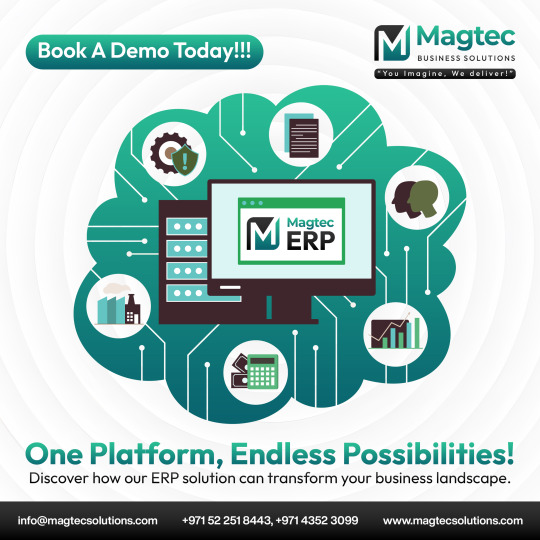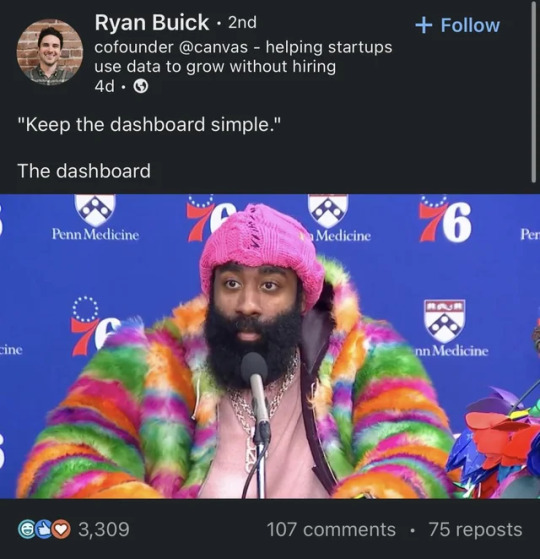#Data Analytics Consultancy
Explore tagged Tumblr posts
Text
Our Data Analytics Services will help you make informed decisions, optimize operations, and monitor overall business performance.
0 notes
Text

Transform your business with Magtec ERP! 🌐✨ Discover endless possibilities on a single platform. Book a demo today and see how we can elevate your operations to the next level! 🚀📈
#magtec#magtecerp#magtecsolutions#erp#businesssolutions#digitaltransformation#innovation#technology#growth#efficiency#productivity#cloud#automation#management#software#enterprise#success#analytics#customization#scalability#integration#teamwork#collaboration#strategy#data#support#consulting#businessdevelopment#transformation#leadership
4 notes
·
View notes
Text
For anyone currently in school or recently in school

I am doing a few guest lectures at some of the universities in my state and working on my presentation. Curious if anyone has any recommendations of topics they really enjoyed from a past guest speaker that isn't major/field-specific?
#college#college student#studying#studyblr#school#university#accounting#finance#consulting#data analytics#data analysis#data visualization#big data#data
22 notes
·
View notes
Text

5 Ways Paid Market Research Industry is Changing Thanks to AI
The market research industry is undergoing a transformative shift, largely driven by the rapid advancements in Artificial Intelligence (AI). Traditional methods that relied on manual data collection, interviews, and human-led analysis are being replaced or augmented by AI-powered tools. These tools are faster, more accurate, and cost-efficient, enabling businesses to gain business research insights that were once difficult or expensive to access.
#market research advanced analytics#top market research consulting companies in India#export import services#nutraceutical & food products#market research data#business market research#product market research
1 note
·
View note
Text

𝐀𝐫𝐞 𝐘𝐨𝐮 𝐑𝐞𝐚𝐝𝐲 𝐭𝐨 𝐑𝐞𝐯𝐨𝐥𝐮𝐭𝐢𝐨𝐧𝐢𝐳𝐞 𝐘𝐨𝐮𝐫 𝐁𝐮𝐬𝐢𝐧𝐞𝐬𝐬? Discover Microsoft Dynamics 365 Business Central's game-changing power. 𝐃𝐢𝐬𝐜𝐨𝐯𝐞𝐫 𝟏𝟎 𝐠𝐚𝐦𝐞-𝐜𝐡𝐚𝐧𝐠𝐢𝐧𝐠 𝐟𝐞𝐚𝐭𝐮𝐫𝐞𝐬: ❇ Cloud-Based ERP ❇ Boosted Productivity ❇ Cost Avoidance ❇ Seamless Microsoft Integration ❇ Scalability ❇ Data-Driven Insights ❇ Simplified Customization ❇ Enhanced Employee Experience ❇ Revenue Growth Enablement ❇ Cost Transparency 𝗦𝘁𝗿𝗲𝗮𝗺𝗹𝗶𝗻𝗲 𝗼𝗽𝗲𝗿𝗮𝘁𝗶𝗼𝗻𝘀, 𝗮𝗺𝗽𝗹𝗶𝗳𝘆 𝗲𝗳𝗳𝗶𝗰𝗶𝗲𝗻𝗰𝘆 𝗮𝗻𝗱 𝗽𝗿𝗼𝗽𝗲𝗹 𝗴𝗿𝗼𝘄𝘁𝗵!
#DigitalTransformation#data analytics#custom software development#cloudcomputing#it consulting#artificial intelligence#automation#datascience#transformation
2 notes
·
View notes
Text
Business Potential with Data Management and Analytics Services
In today's data-driven world, businesses are increasingly relying on data to make informed decisions and drive strategic growth. As organizations collect and generate vast amounts of data, the need for effective data management and analytics services becomes paramount. This is where data analytics consulting services play a crucial role. By harnessing the power of data, businesses can gain valuable insights, enhance operational efficiency, and achieve a competitive edge.
The Importance of Data Management
Data management is the foundation upon which successful data analytics is built. It involves the process of collecting, storing, and organizing data in a manner that ensures its accuracy, accessibility, and security. Effective data management allows organizations to maintain high-quality data that is essential for accurate analysis and decision-making.
Data Collection and Integration
The first step in data management is collecting data from various sources. This can include transactional data, customer interactions, social media, and more. Integrating these diverse data sources into a unified system is crucial for creating a comprehensive view of the business landscape. Data analytics consulting services assist organizations in designing and implementing robust data integration strategies, ensuring that all relevant data is captured and consolidated efficiently.
Data Storage and Organization
Once data is collected, it needs to be stored and organized in a structured manner. This involves setting up databases and data warehouses that can handle large volumes of data while maintaining data integrity. Data management services ensure that data is stored securely and is easily retrievable when needed. Effective data organization also involves categorizing data into meaningful segments, making it easier to analyze and derive insights.
Data Quality and Governance
Maintaining high data quality is essential for accurate analysis. Data management services focus on implementing data quality frameworks that ensure data is accurate, complete, and consistent. Data governance practices are also put in place to manage data policies, standards, and compliance. This helps organizations avoid data-related issues and ensures that data analytics efforts are based on reliable information.
Leveraging Data Analytics
Once data is properly managed, the next step is to leverage it through advanced analytics. Data analytics services help businesses transform raw data into actionable insights that can drive decision-making and strategic planning.
Descriptive Analytics
Descriptive analytics involves analyzing historical data to understand past performance and identify trends. This type of analysis provides a clear picture of what has happened in the past and helps organizations gain insights into their operations. Data analytics consulting services use various statistical and analytical techniques to uncover patterns and trends in historical data, enabling businesses to make data-driven decisions.
Predictive Analytics
Predictive analytics goes a step further by using historical data to forecast future outcomes. By applying statistical models and machine learning algorithms, businesses can predict trends, customer behavior, and potential risks. This proactive approach allows organizations to anticipate challenges and opportunities, making it possible to take preemptive actions. Data analytics consulting services provide expertise in building and deploying predictive models that can enhance business forecasting and planning.
Prescriptive Analytics
Prescriptive analytics offers recommendations for actions based on data insights. It involves using optimization techniques and simulation models to suggest the best course of action for achieving desired outcomes. This type of analytics helps businesses make informed decisions by providing actionable recommendations that align with their strategic goals. Data analytics consulting services assist organizations in developing prescriptive models that guide decision-making and improve overall performance.
The Role of Data Analytics Consulting Services
Data analytics consulting services are essential for helping businesses navigate the complexities of data management and analytics. These services provide expertise and support in various aspects of data analytics, including strategy development, implementation, and optimization.
Strategy Development
Data analytics consultants work closely with organizations to develop data strategies that align with their business objectives. This involves identifying key performance indicators (KPIs), setting data goals, and defining the scope of analytics initiatives. By creating a comprehensive data strategy, consultants ensure that data analytics efforts are focused and effective.
Implementation and Optimization
Once the strategy is in place, data analytics consultants assist with the implementation of data management systems and analytics tools. This includes setting up data infrastructure, integrating data sources, and deploying analytics solutions. Consultants also provide ongoing support to optimize data processes and ensure that analytics tools are used effectively.
Insights and Recommendations
One of the primary benefits of data analytics consulting services is the ability to generate actionable insights and recommendations. Consultants analyze data to uncover trends, identify opportunities, and provide recommendations for improving business performance. These insights help organizations make informed decisions and drive strategic growth.
Conclusion
In an era where data is a valuable asset, effective data management and analytics services are crucial for unlocking business potential. By leveraging data analytics consulting services, organizations can ensure that their data is well-managed, their analytics efforts are targeted, and their decision-making is driven by actionable insights. As businesses continue to navigate the complexities of the data landscape, investing in data management and analytics services will remain a key factor in achieving long-term success.
5 notes
·
View notes
Text
SPARK TECHNOLOGIES
We deliver value by identifying opportunities that align with business objectives and adopting an agile approach to implement them.
#Web developement#Software testing#Devops & Engineering#Salesforce#Mobile Application Developmen#Data Analytics#IT Consulting#IT Outsourcing#Web Design#Content Management System#Digital Marketing
2 notes
·
View notes
Text
SPARK TECHNOLOGIES
We will strive to surpass our clients’ expectations by providing innovative solutions that are grounded in science and experience, developed by recognized experts, and delivered in a trusted manner above reproach. We will remain steadfastly focused on our clients’ goals and work every day to ensure that the issues of current importance, which they are charged with solving, are moved closer to a proven and cost-effective resolution.
#web developement#software testing#devas & Engineering#salesforce#mobile app development#data analytics#it consulting#it outsourcing#web design#content management system#digital marketing
2 notes
·
View notes
Text
SPARK TECHNOLOGIES

We deliver value by identifying opportunities that align with business objectives and adopting an agile approach to implement them. We take full accountability for the IT and operation initiatives we propose and help you accomplish business goals faster. click here for more
#webdevelopement#softwaretesting#devops & engineering#salesforce#mobile application development#data analytics#it consulting#it outsourcing#web design#content management system#digital marketing
2 notes
·
View notes
Text
Leading Microsoft Solutions Partner in Gurgaon | IFI Techsolutions
IFI Techsolutions is Microsoft Solution partners in Gurgaon. Our Implementation expertise involves automation, migration, security, optimize and managed cloud.
#microsoft azure#ifi techsolutions#microsoft partner#information technology#technology#software#azure migration#cloud computing#marketing#digital transformation#it consulting#data analytics
1 note
·
View note
Text
Why Most Companies Fail at AI Data Visualization in 2025

A data strategist’s perspective on what separates successful data-driven organizations from those drowning in dashboards
I’ll never forget the moment a Fortune 500 executive looked at me across a conference table and said, “We have 47 different dashboards, but I still can’t answer whether our Q3 marketing campaign actually worked.”
That conversation happened three years ago, but it perfectly captures the AI tools for data visualization crisis facing businesses today. Despite spending billions on BI tools and analytics platforms, 73% of organizations struggle to extract meaningful insights from their data investments.
The problem isn’t a lack of data or tools — it’s a fundamental misunderstanding of what effective AI-powered data visualization tools actually accomplish.
The Hidden Cost of Bad Data Visualization
Here’s a statistic that should alarm every business leader: companies lose an average of $15 million annually due to poor data visualization and delayed decision-making. That’s not just about pretty charts or color schemes — it’s about the strategic decisions that get postponed, the opportunities that slip away, and the competitive advantages that never materialize.
I’ve witnessed this firsthand across hundreds of client engagements. Organizations invest heavily in data collection and storage, then wonder why their teams still can’t answer basic business questions quickly. The missing piece isn’t more data — it’s strategic data visualization services that transform raw information into actionable intelligence.
The Three Critical Gaps Most Organizations Face
Gap 1: Technical Complexity vs. Business Needs Most data visualization tools implementations prioritize technical sophistication over user adoption. Teams build complex dashboards that require extensive training, then wonder why executives prefer Excel spreadsheets for critical decisions.
Gap 2: Static Reporting vs. Dynamic Intelligence Traditional approaches focus on historical reporting rather than forward-looking insights. Modern AI data visualization tools can predict trends and automatically surface anomalies, but most organizations are still stuck in reactive reporting mode.
Gap 3: Tool-Centric vs. Strategy-Centric Thinking Organizations often select best AI data visualization tools first, then try to fit their business needs around platform capabilities. This backwards approach leads to expensive implementations that never deliver promised ROI.
What Separates High-Performing Data Organizations
After analyzing successful data transformation initiatives across industries, a clear pattern emerges. The 27% of companies that excel at AI tools for data visualization share three fundamental characteristics:
1. They Prioritize Business Outcomes Over Technical Features
Successful organizations start with specific business questions they need to answer, then design visualization strategies around those outcomes. Instead of asking “What can this tool do?” they ask “What decisions do we need to make faster?”
A manufacturing client reduced quality control costs by $2.8 million annually simply by implementing real-time AI data visualization tools rather than daily batch reports. The tool didn’t change — the strategic approach did.
2. They Design for Adoption, Not Admiration
Beautiful dashboards that nobody uses are expensive art projects, not business tools. High-performing organizations obsess over user adoption metrics and continuously optimize based on actual usage patterns.
One retail chain achieved 94% executive dashboard adoption by focusing on mobile-first design and natural language queries through AI-powered data visualization tools. Their previous platform, despite costing 300% more, never exceeded 23% regular usage.
3. They Treat Visualization as a Strategic Capability, Not a Technical Project
The most successful implementations involve cross-functional teams that include business stakeholders, data experts, and user experience specialists. They understand that effective data visualization tools require both technical excellence and deep business context.
The AI Revolution in Data Visualization
The landscape of AI tools for data visualization has transformed dramatically in 2025. Modern platforms like Microsoft Power BI, Tableau, and Google Looker Studio now offer sophisticated AI capabilities that were unimaginable just two years ago.
Natural Language Processing Changes Everything
The most significant breakthrough in AI data visualization tools is natural language processing. Instead of learning complex query languages, business users can now ask questions like:
“Show me which product categories are underperforming this quarter”
“What factors are driving customer churn in the Northeast region?”
“Compare our marketing ROI across all channels for the past 18 months”
Modern AI-powered data visualization tools understand these queries and automatically generate appropriate visualizations with contextual insights.
Automated Insight Discovery
The best AI data visualization tools don’t just respond to questions — they proactively surface insights you might miss. ThoughtSpot and similar platforms use machine learning to continuously analyze your data, identifying anomalies, correlations, and forecast opportunities without manual intervention.
One financial services client discovered a correlation between customer support ticket volume and churn risk through automated insights that their traditional reporting had never revealed. This led to a proactive retention program that reduced churn by 18%.
Predictive Analytics Integration
Unlike traditional data visualization tools, modern AI tools for data visualization incorporate predictive capabilities directly into dashboards. Instead of showing only what happened, they forecast what’s likely to happen next, enabling proactive decision-making rather than reactive responses.
The Strategic Framework That Actually Works
Through years of implementation experience, I’ve developed a framework that consistently delivers measurable results. This approach focuses on four foundational elements that transform AI data visualization tools from a technical exercise into a strategic advantage.
Phase 1: Business Intelligence Audit
Before designing a single chart, successful projects begin with a comprehensive assessment of current decision-making processes. This involves:
Decision Mapping: Identifying the specific decisions that drive business outcomes
Information Flow Analysis: Understanding how data currently moves through the organization
Stakeholder Requirements: Documenting what different users actually need to make better decisions
Technology Assessment: Evaluating existing tools and infrastructure capabilities
This foundational work ensures that your AI-powered data visualization tools implementation addresses real business needs rather than perceived technical requirements.
Phase 2: Strategic Visualization Design
With business requirements clearly defined, the design phase focuses on creating visualization strategies that support specific outcomes:
Executive Dashboards: High-level KPIs and trend analysis for strategic decision-making using AI tools for data visualization
Operational Monitoring: Real-time performance tracking for day-to-day management
Analytical Deep-Dives: Interactive exploration tools for detailed investigation
Predictive Intelligence: Forward-looking insights that enable proactive decision-making
Phase 3: Implementation and Integration
The technical implementation phase prioritizes user adoption and business value delivery:
Phased Rollout: Starting with high-impact use cases to demonstrate immediate value
User Training: Comprehensive education programs that build organizational data literacy
Integration Planning: Seamless connectivity with existing business systems
Performance Optimization: Ensuring fast query response times and reliable uptime
Phase 4: Continuous Optimization
Successful AI data visualization tools implementation is never a “set it and forget it” proposition. The optimization phase ensures sustained value delivery:
Usage Analytics: Monitoring how stakeholders actually interact with visualizations
Business Impact Measurement: Tracking the ROI of visualization investments
Iterative Improvement: Regular updates based on changing business needs
Advanced Capability Development: Expanding into predictive analytics and AI-powered insights
Real-World Results: Case Studies in AI Visualization Transformation
Healthcare System: $12M Cost Reduction Through AI-Powered Operational Visibility
A regional healthcare network struggled with resource allocation across 23 facilities. Despite having robust ERP systems, administrators couldn’t identify capacity bottlenecks until they became critical issues.
The Challenge: Fragmented data across multiple systems made it impossible to optimize resource allocation proactively.
The Solution: Integrated operational dashboards using AI tools for data visualization that provided real-time visibility into capacity utilization, patient flow, and resource availability across all facilities. The AI components automatically flagged potential bottlenecks and suggested optimal resource allocation.
The Results:
34% reduction in patient wait times
$12 million annual cost savings through improved resource utilization
67% improvement in emergency department efficiency
89% user adoption rate among hospital administrators
Predictive capacity planning reduced overcrowding by 45%
Financial Services: 3x Faster Decision-Making with AI Analytics
A mid-market investment firm needed to accelerate their portfolio management decisions in an increasingly volatile market environment.
The Challenge: Critical investment decisions relied on static reports that were often outdated by the time they reached decision-makers.
The Solution: Real-time portfolio performance dashboards with AI-powered data visualization tools featuring predictive analytics and automated alert systems. The AI components provided market sentiment analysis and risk forecasting.
The Results:
3x faster response time to market changes
28% improvement in portfolio performance
$40 million increase in assets under management within 18 months
95% reduction in manual reporting time
AI-driven risk alerts prevented $8.2 million in potential losses
Platform Comparison: Choosing the Right AI Tools for Data Visualization
The technology landscape for AI data visualization tools has evolved dramatically, with each platform offering unique strengths:
Enterprise-Grade Solutions
Microsoft Power BI excels in organizations already using Microsoft ecosystem tools. Its AI features include natural language Q&A, automated insight generation, and predictive analytics. Best for companies under 500 employees seeking cost-effective enterprise features.
Tableau remains the gold standard for complex analytics. Its Einstein AI integration provides sophisticated machine learning capabilities and advanced statistical analysis. Ideal for data-heavy organizations with dedicated analytics teams.
Democratized AI Analytics
ThoughtSpot pioneered search-driven analytics, making AI tools for data visualization as intuitive as Google search. Perfect for organizations wanting to democratize data access across large user bases.
Google Looker Studio offers sophisticated AI data visualization tools capabilities completely free. Recent AI enhancements include smart chart suggestions, automated insights, and natural language descriptions — making it ideal for small to medium businesses.
Specialized AI Platforms
Qlik Sense uses associative analytics to reveal hidden data relationships through AI. Its cognitive engine enables natural language interaction and autonomous insight generation.
The key is matching platform capabilities to your organization’s data maturity, technical skills, and business requirements rather than chasing the latest features.
Implementation Best Practices for AI-Powered Success
Start with Strategic Clarity
Before evaluating best AI data visualization tools or hiring consultants, document the specific business decisions that visualization should improve. This clarity will guide every subsequent choice and ensure investments deliver measurable value.
Invest in Organizational Capability
Technology is only as valuable as the people who use it. Successful AI tools for data visualization initiatives require investment in training, change management, and ongoing support. Many organizations underestimate the cultural shift required to become truly data-driven.
Partner with Specialists
While internal teams understand your business, specialized consultants bring experience across industries, platforms, and implementation challenges. The right partnership accelerates time-to-value while avoiding common pitfalls that can derail AI visualization projects.
Professional data visualization services provide the expertise, methodology, and experience necessary to navigate this transformation successfully. Rather than learning through expensive trial and error, organizations can leverage proven frameworks that deliver measurable results from day one.
Measure and Optimize Continuously
AI data visualization tools improve over time through systematic measurement and optimization. Track both technical metrics (query performance, uptime, AI accuracy) and business outcomes (decision speed, user adoption, ROI).
The Future of AI-Powered Data Visualization
Looking ahead, several trends will shape the evolution of AI data visualization tools:
Conversational Analytics
Natural language interfaces will become the primary way users interact with data. Expect AI data visualization tools to understand context, remember previous conversations, and provide increasingly sophisticated responses to complex business questions.
Automated Business Intelligence
AI-powered data visualization tools will proactively monitor business performance, automatically generating reports, alerts, and recommendations. This shift from reactive to proactive analytics will fundamentally change how organizations make decisions.
Augmented Analytics
AI will increasingly act as a data analyst partner, suggesting visualizations, identifying relevant data sources, and explaining insights in business context. This augmentation will make advanced analytics accessible to every business user.
Integration with Business Workflows
Future AI tools for data visualization will embed insights directly into business applications, email, and messaging platforms. Decision-makers will receive relevant data without leaving their workflow.
Measuring Success: KPIs for AI Visualization ROI
To ensure your AI data visualization tools investment delivers value, track these key metrics:
Business Impact Metrics
Decision Speed: Time from question to insight
Data Adoption: Percentage of employees actively using analytics
Business Outcomes: Revenue, cost savings, efficiency gains attributable to data-driven decisions
Technical Performance Metrics
Query Response Time: Speed of dashboard loading and data refresh
AI Accuracy: Precision of automated insights and predictions
System Uptime: Reliability and availability of visualization platforms
User Experience Metrics
User Satisfaction: Regular surveys on tool usability and value
Training Requirements: Time needed to achieve user proficiency
Self-Service Success: Percentage of questions answered without IT support
Building Your AI Data Visualization Strategy
Assessment Phase
Current State Analysis: Evaluate existing data visualization tools and identify gaps
Business Requirements: Document specific decisions that need data support
Technical Readiness: Assess data quality, infrastructure, and team capabilities
ROI Projections: Estimate potential value from improved decision-making
Selection Phase
Platform Evaluation: Compare best AI data visualization tools against requirements
Pilot Planning: Design focused tests that demonstrate value quickly
Vendor Assessment: Evaluate support, training, and long-term viability
Integration Planning: Ensure compatibility with existing systems
Implementation Phase
Phased Rollout: Start with high-impact, low-risk use cases
Training Program: Build organizational capacity for AI-powered data visualization tools
Change Management: Address cultural barriers to data-driven decision making
Continuous Optimization: Regular review and improvement of visualization strategies
Conclusion: Transform Your Data Into Competitive Advantage
The organizations thriving in 2025 have moved beyond viewing data as a reporting requirement to embracing AI tools for data visualization as a strategic asset. They understand that in a world where every company has access to similar technologies, competitive advantage comes from the ability to transform data into decisions faster than the competition.
Key takeaways for successful AI visualization implementation:
Start with business outcomes, not technology features — the best AI data visualization tools solve specific problems
Prioritize user adoption over technical sophistication — unused dashboards deliver zero ROI
Invest in organizational change management — technology alone doesn’t create data-driven cultures
Partner with experienced specialists — proven methodologies accelerate success while avoiding costly mistakes
Measure and optimize continuously — AI-powered data visualization tools improve through systematic refinement
The data visualization tools landscape has evolved from static reporting to intelligent, predictive analytics. Modern AI data visualization tools can understand natural language questions, automatically surface insights, and predict future trends — capabilities that seemed impossible just a few years ago.
However, technology is only part of the equation. The organizations achieving breakthrough results combine the best AI data visualization tools with strategic implementation, comprehensive training, and a commitment to data-driven decision making.
Transform your scattered data into strategic insights with proven AI tools for data visualization that drive measurable business outcomes. Whether you need help selecting the right platform, implementing advanced analytics, or training your team on AI data visualization tools, our specialists can guide you through every step of the transformation.
Discover how strategic data visualization services can accelerate your journey from data overwhelm to competitive advantage.
#data analytics consulting services#analytics consulting#data analytics consulting#data analytics consulting company#data analytics#data and analytics consultant#business intelligence consulting
0 notes
Text
Flexible Domain for Analytics or Strategy Brands
http://acknowledgecalculated.com is ideal for data, AI, or consulting ventures. Buy it today: https://www.godaddy.com/en-uk/domainsearch/find?domainToCheck=acknowledgecalculated.com
0 notes
Text

#Finance#Business#Work Meme#Work Humor#Excel#Hilarious#funny meme#funny#accounting#office humor#consulting#big data#data analysis#data visualization#data analytics#data#dashboard commentary#tableau#power bi
13 notes
·
View notes
Text

US Chemical Manufacturing | Emerging Trends & Impact on Global Markets
The chemical industry in the United States boasts of high rankings, and the market is dominated by this industry. Contemporary concerns in chemical manufacturing outlining the chemical industry’s prospects are sustainable development, innovation, and digitalization. Such trends are not only reflected at the level of the domestic market in the United States but also have consequences for markets all over the world. This blog focuses on the current trends in the chemical manufacturing in the United States also discusses the factors that influence chemical industry of United States in the global market.
#market analyst companies#market research data science#data science for market research#market research advanced analytics#top market research consulting companies in India
1 note
·
View note
Text
Leading the Digital Revolution: Visionary IT Consulting
In today’s rapidly evolving digital landscape, businesses face unprecedented challenges and opportunities. As technology continues to advance at an exponential pace, the role of IT consulting has become paramount in driving organizational success. IT consultants play a crucial role in navigating the complexities of the digital world, providing strategic guidance, and implementing innovative solutions that propel businesses forward.
Evolution of IT Consulting
Early Days of IT Consulting
IT consulting traces its roots back to the early days of computing when businesses began to recognize the potential of technology in optimizing operations and gaining a competitive edge. Initially focused on hardware and software support, IT consulting gradually evolved to encompass a broader range of services, including system integration, cybersecurity, and digital transformation.
Rise of Digital Transformation
The digital revolution marked a significant shift in IT consulting, emphasizing the importance of digital transformation. Businesses began to leverage technologies such as cloud computing, big data analytics, and artificial intelligence to streamline processes, enhance customer experiences, and drive innovation. IT consultants played a pivotal role in guiding organizations through this transformative journey, aligning technology initiatives with strategic business objectives.
Impact of Cloud Computing
One of the key drivers of digital transformation has been the widespread adoption of cloud computing. Cloud services offer scalability, flexibility, and cost-efficiency, enabling businesses to modernize their IT infrastructure and accelerate innovation. IT consultants help organizations harness the power of the cloud, migrating legacy systems, optimizing cloud environments, and leveraging cloud-native technologies to drive business value.
Importance of Visionary IT Consulting
Understanding Market Trends
Visionary IT consulting goes beyond technical expertise; it involves a deep understanding of market trends and industry dynamics. IT consultants stay abreast of emerging technologies, market disruptions, and competitive landscapes, providing strategic insights that empower businesses to stay ahead of the curve.
Strategic Planning for Businesses
Visionary IT consultants engage in strategic planning, aligning technology initiatives with business goals and objectives. They collaborate closely with stakeholders, conduct thorough assessments, and develop comprehensive roadmaps that guide organizations towards digital transformation and sustainable growth.
Implementing Innovative Solutions
Innovation lies at the heart of visionary IT consulting. Consultants leverage cutting-edge technologies such as artificial intelligence, machine learning, and Internet of Things (IoT) to deliver innovative solutions that drive operational efficiency, enhance customer experiences, and create new revenue streams.
Role of IT Consultants in Digital Revolution
Driving Change and Innovation
IT consultants play a pivotal role in driving change and fostering innovation within organizations. By identifying opportunities for process improvement, automation, and digitalization, consultants help businesses adapt to evolving market dynamics and stay competitive in the digital age.
Enhancing Business Efficiency
Efficiency is key to success in the digital era, and IT consultants are instrumental in optimizing business processes, workflows, and IT systems. Through careful analysis, strategic planning, and implementation of best practices, consultants streamline operations, reduce costs, and improve overall efficiency.
Ensuring Cybersecurity Measures
With the proliferation of cyber threats, cybersecurity has become a top priority for businesses. IT consultants implement robust security measures, conduct risk assessments, and develop proactive strategies to safeguard sensitive data, protect against cyber attacks, and ensure regulatory compliance.
Challenges and Opportunities
Addressing Technological Challenges
While the digital revolution offers immense opportunities, it also presents challenges such as technological complexity, data privacy concerns, and cybersecurity risks. IT consultants help businesses navigate these challenges, providing expertise in areas such as cloud security, data governance, and regulatory compliance.
Leveraging Emerging Technologies
Emerging technologies such as artificial intelligence, blockchain, and quantum computing are reshaping industries and creating new possibilities. IT consultants help businesses harness the potential of these technologies, enabling them to innovate, differentiate, and stay ahead of competitors.
Adapting to Market Dynamics
Market dynamics are constantly evolving, driven by factors such as consumer behavior, industry trends, and geopolitical shifts. IT consultants assist businesses in adapting to these dynamics, leveraging data-driven insights, market research, and strategic planning to capitalize on opportunities and mitigate risks.
Future Trends in IT Consulting
AI and Machine Learning Integration
The integration of artificial intelligence (AI) and machine learning (ML) is poised to revolutionize IT consulting. AI-powered analytics, automation, and decision-making tools will enable consultants to deliver more personalized, predictive, and scalable solutions to clients, driving innovation and value creation.
IoT and Industry 4.0 Impact
The Internet of Things (IoT) and Industry 4.0 technologies are reshaping industries, connecting devices, machines, and processes in a hyper-connected ecosystem. IT consultants play a crucial role in harnessing IoT capabilities, optimizing IoT infrastructure, and leveraging real-time data insights to drive operational excellence and business growth.
Sustainable IT Solutions
Sustainability is a growing concern for businesses worldwide, driving demand for eco-friendly IT solutions. IT consultants are at the forefront of designing and implementing sustainable IT strategies, leveraging renewable energy, green technologies, and circular economy principles to minimize environmental impact and drive social responsibility.
Conclusion
In conclusion, visionary IT consulting is indispensable in leading the digital revolution and shaping the future of business. By understanding market trends, driving change and innovation, addressing challenges, and leveraging emerging technologies, IT consultants empower organizations to thrive in a rapidly evolving digital landscape.
0 notes
Text
What is Customer Analytics? – The Importance of Understanding It
Consumers have clear expectations when selecting products or services. Business leaders need to understand what influences customer decisions. By leveraging advanced analytics and engaging in data analytics consulting, they can pinpoint these factors and improve customer experiences to boost client retention. This article will explore the importance of customer analytics.
Understanding Customer Analytics
Customer analytics involves applying computer science, statistical modeling, and consumer psychology to uncover the logical and emotional drivers behind consumer behavior. Businesses and sales teams can work with a customer analytics company to refine customer journey maps, leading to better conversion rates and higher profit margins. Furthermore, they can identify disliked product features, allowing them to improve or remove underperforming products and services.
Advanced statistical methods and machine learning (ML) models provide deeper insights into customer behavior, reducing the need for extensive documentation and trend analysis.
Why Customer Analytics is Essential
Reason 1 — Boosting Sales
Insights into consumer behavior help marketing, sales, and CRM teams attract more customers through effective advertisements, customer journey maps, and post-purchase support. Additionally, these insights, provided through data analytics consulting, can refine pricing and product innovation strategies, leading to improved sales outcomes.
Reason 2 — Automation
Advances in advanced analytics services have enhanced the use of ML models for evaluating customer sentiment, making pattern discovery more efficient. Consequently, manual efforts are now more manageable, as ML and AI facilitate automated behavioral insight extraction.
Reason 3 — Enhancing Long-Term Customer Relationships
Analytical models help identify the best experiences to strengthen customers��� positive associations with your brand. This results in better reception, positive word-of-mouth, and increased likelihood of customers reaching out to your support team rather than switching to competitors.
Reason 4 — Accurate Sales and Revenue Forecasting
Analytics reveal seasonal variations in consumer demand, impacting product lines or service packages. Data-driven financial projections, supported by data analytics consulting, become more reliable, helping corporations adjust production capacity to optimize their average revenue per user (ARPU).
Reason 5 — Reducing Costs
Cost per acquisition (CPA) measures the expense of acquiring a customer. A decrease in CPA signifies that conversions are becoming more cost-effective. Customer analytics solutions can enhance brand awareness and improve CPA. Benchmarking against historical CPA trends and experimenting with different acquisition strategies can help address inefficiencies and optimize marketing spend.
Reason 6 — Product Improvements
Customer analytics provides insights into features that can enhance engagement and satisfaction. Understanding why customers switch due to missing features or performance issues allows production and design teams to identify opportunities for innovation.
Reason 7 — Optimizing the Customer Journey
A customer journey map outlines all interaction points across sales funnels, complaint resolutions, and loyalty programs. Customer analytics helps prioritize these touchpoints based on their impact on engaging, retaining, and satisfying customers. Address risks such as payment issues or helpdesk errors by refining processes or implementing better CRM systems.
Conclusion
Understanding the importance of customer analytics is crucial for modern businesses. It offers significant benefits, including enhancing customer experience (CX), driving sales growth, and preventing revenue loss. Implementing effective strategies for CPA reduction and product performance is essential, along with exploring automation-compatible solutions to boost productivity. Customer insights drive optimization and brand loyalty, making collaboration with experienced analysts and engaging in data analytics consulting a valuable asset in overcoming inefficiencies in marketing, sales, and CRM.
3 notes
·
View notes